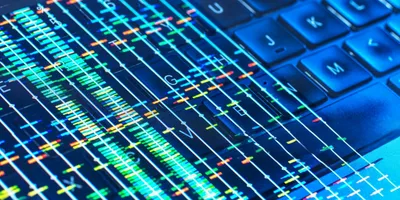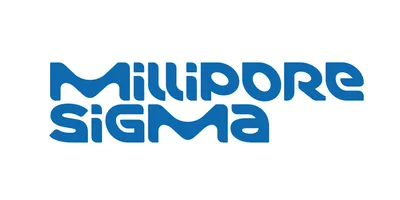Introduction: Understanding GMP vs Non-GMP Workflows in the Lab
Pharmaceutical laboratories and formulation groups often handle both regulatory and non-regulatory work. Not all data or products are intended for submission to health authorities, prompting a common question: can non-GMP practices operate within GMP environments without compromising compliance? The key lies in understanding and clearly distinguishing GMP (Good Manufacturing Practice) from NGMP (Not to be used for GMP) activities.
GMP refers to the systems that ensure consistent product quality and adherence to regulatory standards. Non-GMP, often mischaracterized as non-compliant, should instead be redefined as NGMP, meaning processes and data not intended for GMP applications but still maintained under controlled and traceable conditions. By implementing strong quality systems, equipment labeling, and documentation protocols, labs can support both GMP and NGMP tasks while maintaining regulatory integrity and operational efficiency.
How to Define and Separate GMP vs Non-GMP Workflows
Laboratories often strive to define clear boundaries between GMP and NGMP activities, but these lines can become difficult to maintain in practice, particularly in multifunctional lab environments where workflows overlap. For instance, a laboratory might develop a new analytical method under NGMP conditions for early-stage research and later adapt it for validated use under GMP requirements. This overlap creates potential compliance ambiguities if not properly documented and categorized.
To maintain clear separation, labs should implement strategic categorization frameworks that distinguish each activity by purpose, intended use of data, and regulatory impact. Documentation protocols such as project-specific tracking, usage tagging, and data segregation are critical. One practical example includes using color-coded sample labels and dedicated logbooks or LIMS entries that denote whether a sample or method is GMP-relevant.
This dual-path strategy allows a single facility to support both innovative research and compliant manufacturing or testing, enhancing operational flexibility without compromising regulatory integrity.
Quality Assurance Strategies for Managing GMP vs Non-GMP Activities
Quality assurance teams may resist the notion of non-GMP practices within regulated spaces. However, by redefining NGMP as distinct from non-compliance, and ensuring such data is excluded from regulatory purposes, compliance can be upheld. This approach reframes the discussion from non-compliance to appropriate use.
Using Qualified Lab Infrastructure for Both GMP and Non-GMP Testing
In contract analytical laboratories that serve a mix of regulated and non-regulated clients, not every analysis demands the rigor of full GMP compliance. However, these labs often have established infrastructure, including validated equipment, trained personnel, and comprehensive SOPs, which can be leveraged to support both GMP and NGMP workflows without compromising quality or efficiency. For example, a client may only need raw data for internal research, while another requires regulatory-grade data for submission. By utilizing the same qualified systems under different operational categories, labs can provide tailored services based on client needs.
To ensure compliance, labs should implement clear documentation practices that distinguish the purpose and regulatory scope of each analysis. This includes labeling sample runs, tagging analytical reports, and segmenting data storage based on GMP relevance. When executed with discipline, this dual-use strategy reduces redundancy, optimizes resource allocation, and allows seamless scaling of services across a broader client base while maintaining integrity and transparency.
Best Practices for GMP vs Non-GMP Material Management in Formulation Labs
Formulation labs often face the dilemma of using GMP-approved excipients. For developmental or research formulations not intended for clinical use, using NGMP materials avoids the overhead of vendor qualification and material approval. Implementing inventory tracking systems with labeling and categorization ensures clarity, reduces compliance risks, and aids in hazardous material management.
Best Practices:

Best practices for GMP vs Non-GMP materials. OpenAI (2025)
- Label materials with NGMP/GMP status Clearly identify whether materials are intended for GMP or NGMP use through visual labeling systems such as tags or barcodes. This reduces confusion among lab staff and supports proper documentation and segregation.
- Use unique identifiers for traceability Assign unique identifiers to all materials and samples, enabling accurate tracking throughout their lifecycle. This facilitates traceability, ensures accountability, and supports auditing and inventory management processes.
- Track expiration and assign destruction datesMonitor all materials for shelf-life compliance by using expiration dates and setting automated reminders for review and destruction. Implementing this process ensures expired materials are removed promptly, reducing compliance risks and minimizing storage of obsolete items.
How to Handle Spreadsheets and Experimental Formulations in GMP Environments
Two critical compliance challenges arise in mixed GMP and NGMP environments: spreadsheet validation and the management of experimental formulations. Spreadsheets used for tracking inventory, sample movement, or batch records may require formal validation depending on their purpose, complexity, and level of user access. Multi-user spreadsheets, or those that perform calculations influencing GMP decisions, often require rigorous validation aligned with data integrity guidelines and 21 CFR Part 11 requirements.
Advanced Lab Management Certificate
The Advanced Lab Management certificate is more than training—it’s a professional advantage.
Gain critical skills and IACET-approved CEUs that make a measurable difference.
Regarding formulation storage, non-clinical or research-grade products should be clearly labeled with statements such as "Not intended for clinical use," along with storage conditions, preparation date, and expiration or destruction date. These materials should be segregated from clinical trial materials or commercial batches to avoid cross-contamination or misidentification. Implementing physical separation, barcode labeling, and electronic inventory controls ensures traceability and mitigates the risk of regulatory violations or product misuse.
Equipment Tagging and Qualification for GMP vs Non-GMP Use
Introducing new instruments into a GMP laboratory environment doesn't require immediate validation, especially when the initial use is exploratory or non-regulatory. To manage compliance proactively, implement a visual tagging system that clearly indicates the equipment's status and its permitted applications:
- "Not to be used for GMP" – For instruments undergoing familiarization or used strictly in NGMP workflows.
- "Special Purpose" – Reserved for niche tasks or unique protocols not aligned with validated GMP procedures.
- "Out of Service" – Equipment pending repair, decommissioning, or requalification.
Each tag should be accompanied by a log entry or electronic tracking system that documents the rationale, usage boundaries, and current operational status. This approach supports flexible equipment utilization while maintaining regulatory clarity. It also enables labs to incrementally qualify equipment as needed. Always align with USP <1058> Analytical Instrument Qualification to classify instruments (Group A, B, or C) and ensure a scalable, risk-based compliance strategy.
Final Thoughts: Ensuring Compliance Across GMP and Non-GMP Operations
The notion of "non-GMP in a GMP world" is better understood as NGMP (Not to be used for GMP). With well-defined boundaries, clear labeling, and strong quality systems, lab managers can enable both GMP and NGMP activities to coexist. Proper training, communication, and infrastructure make it possible to support both regulatory and exploratory work without compromising compliance.
By acknowledging that operational boundaries can shift but must remain distinguishable, laboratories can successfully manage both GMP and NGMP workflows within a single cohesive environment.
Frequently Asked Questions (FAQ)
What is the difference between GMP and non-GMP?
GMP (Good Manufacturing Practice) involves regulated practices to ensure consistent product quality, while non-GMP refers to processes not intended to meet regulatory requirements. However, NGMP (Not to be used for GMP) is a more precise term, indicating controlled activities that are not suitable for regulatory use.
Can non-GMP and GMP processes operate in the same lab?
Yes, non-GMP (NGMP) and GMP activities can coexist in the same facility when proper systems, labeling, equipment qualification, and workflow separation strategies are in place to maintain compliance and avoid cross-contamination.
What are examples of NGMP activities?
Examples include research formulations, internal method development, or client analyses not intended for submission to regulatory authorities. These may use qualified equipment and personnel but are clearly marked as "Not to be used for GMP."
How can labs manage NGMP materials?
Labs should implement inventory tracking systems, use unique identifiers, and clearly label materials to indicate NGMP status. Expiration tracking and proper disposal protocols are essential for maintaining compliance and avoiding mix-ups.












